
The most powerful steam locomotive ever built, this beautiful symphony of iron, water
and fire represents something extremely special to me. An Allegheny was the
first steam train that I have memory of touching, much less sitting in the cab
thereof. At
The Henry Ford Museum
in Dearborn, MI, one of the final two remaining
Allegheny engines survives, where I, as a young boy first encountered #1601. She
is a MONSTER. Built in 1941, her drive wheels are nearly six feet tall, and the engine with
tender span nearly 125 feet. Until you actually stand next to (and inside of!)
this behemoth, you cannot appreciate just how massive she really is.
 In front of #1601 at The Henry Ford Museum So here's the deal... MTH came out with a certain new RailKing engine in 2009. You guessed it, the Allegheny H-8. This engine ended up being one of their RailKing Imperial models which encompass an upgraded level of detailed realism and scaling. Beyond this, one of the roadnames for this model was Chesapeke & Ohio. The final straw that nailed me to the wall was that of the two engine numbers they ran for this model, one was #1601. That's right, the EXACT same engine that deflowered me from steam locomotive virginity could now be running on my railroad. Long story short, she is now the absolute pride of my collection. Sure I love all my engines, but this lady is the belle of the ball. Even the high-pitched hooter whistle is close to how I remembered it from pushing the demonstration button back at the museum as a kid (and you can still do today). What makes me even happier is knowing that #1601 was also Jared's (and soon Devin's) first up-close encounter with a real steam locomotive as well. (Click on any picture to enlarge) 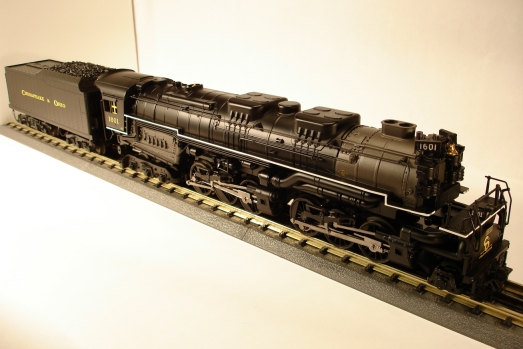 The Allegheny deserves an even bigger photo Click here for videos of the Allegheny 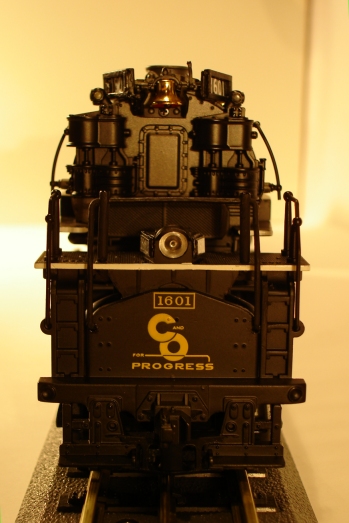 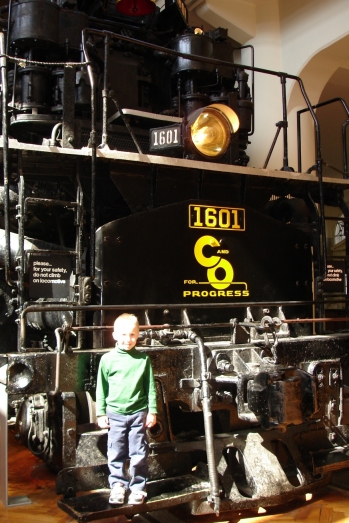 The prototype head on 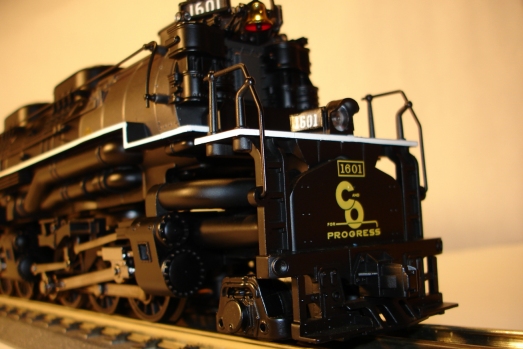  Another shot of the prototype 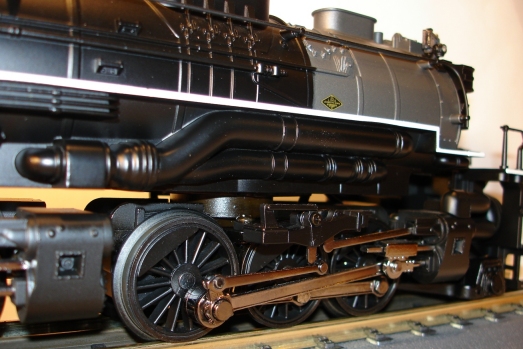 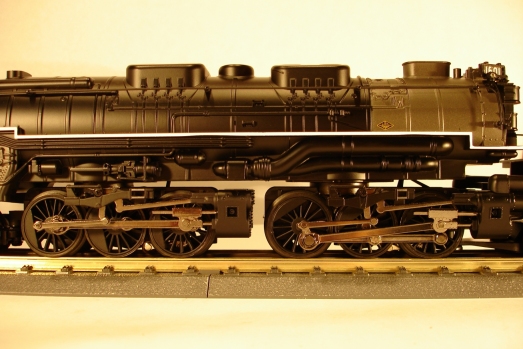 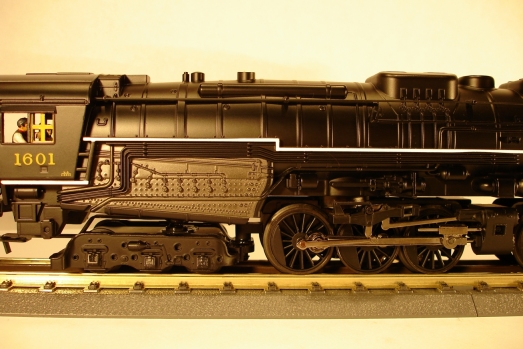 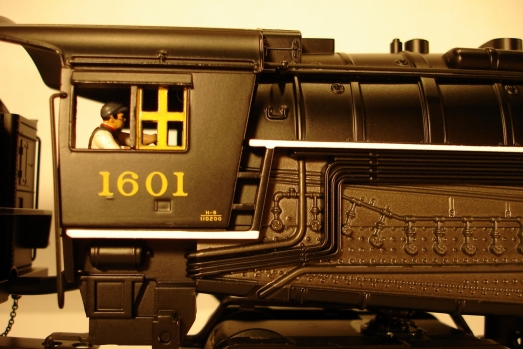 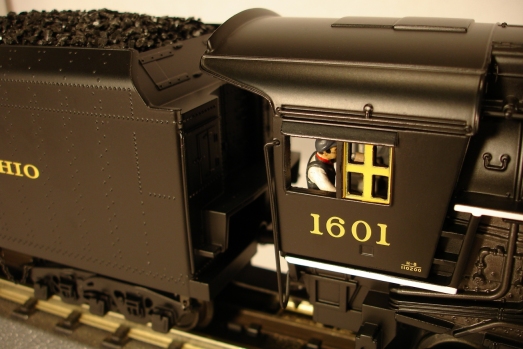 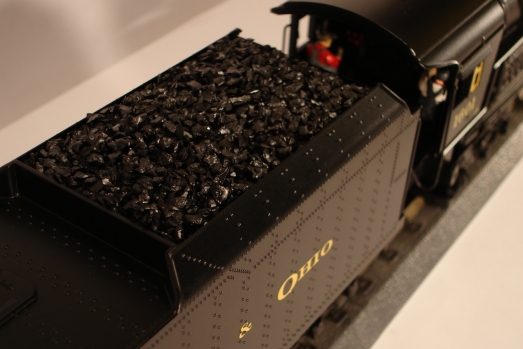 Real coal load 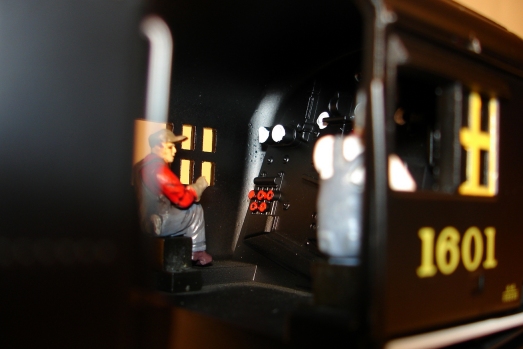 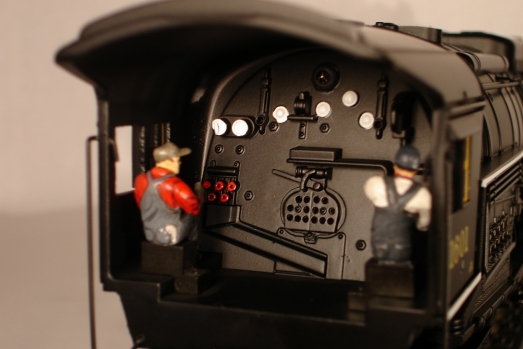 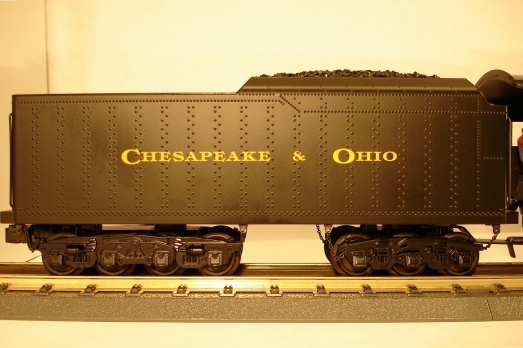 Note the safety chains on the tender trucks 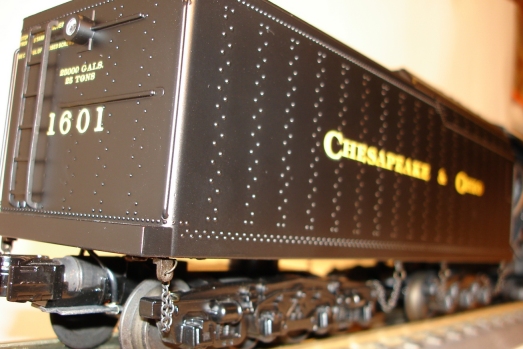 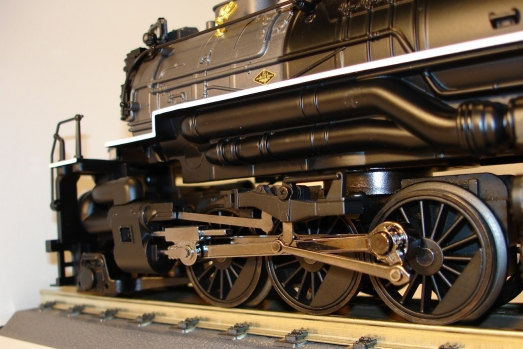 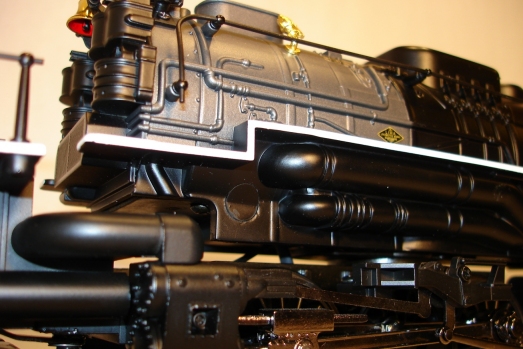 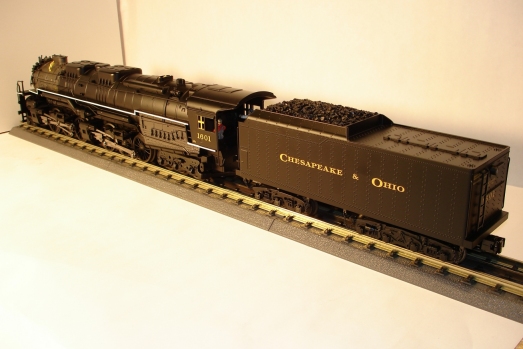 Here's some history... In the 1930s, the C&O improved its railroad by boring new tunnels and enlarging others. The Class T-1 "Texas" type 2-10-4s also arrived in the early 1930s and seemed to be the choice for hauling its coal trains over the 80 miles of track from Hinton, WV east to Clifton Forge, VA. This run included a 13 mile .577% grade to the 2,072 foot summit of an Allegheny mountain and then a descent down a 1.14% grade to Clifton Forge. Its 2-6-6-2s were getting old and the 2-8-8-2s, delivered in the 1920s, (which used simple expansion because of tight tunnel clearances) were not up to the task. On the brink of ordering more 2-10-4s the C&O was approached by the Lima Locomotive Company with a new and more powerful locomotive design. This design was a six-coupled, single-expansion articulated with 67" diameter drivers for speed, a 9' x 15' firebox with a very large boiler for steaming and 775,000 pounds of locomotive weight to assure tractive effort. The large fire box was placed behind the drivers and required a six-wheel trailing truck to support it. This gave the design a wheel arrangement of 2-6-6-6. With four 22.5" diameter x 33" stroke cylinders, a 260 psi boiler pressure and the 67" diameter drivers it could exert 110,200 pounds of tractive effort. 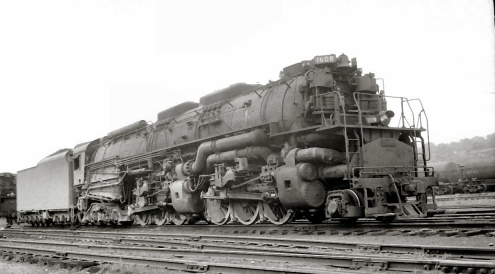 #1608 The C&O agreed and placed an order for ten of these 2-6-6-6 locomotives and Lima delivered them in December, 1941. They were designated Class H-8 and assigned road numbers 1600 through 1609. With a new wheel arrangement came a new name. The C&O selected the name "Allegheny" for the mountain range that this new locomotive would do its work. The C&O Alleghenies cost around $270,000.00 each. The tenders for these new locomotives were of the largest type used on the C&O, with a 25,000 gallon water tank and a 25 ton coal bunker. In order to keep the overall length of the locomotive and tender within the limit that existing turntables could handle it was necessary to make the rear section of the tender higher, thus causing more weight to be at the rear than the front. The tender had a six-wheel leading truck, but an eight-wheel trailing truck was needed to carry the weight in the rear. 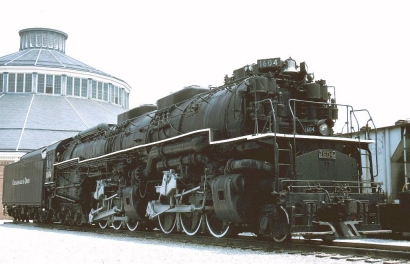 #1604 In operation, one "Allegheny" leading and one pushing could move a 140 car loaded coal train up the mountain from the Hinton terminal. At the top the pusher would be taken off, turned around and sent back to the Hinton terminal. The single leading "Allegheny" could handle the decent down the mountain to Clifton Forge where it would be turned around for a return trip with a train of empty coal cars. The C&O had 23 of its "Alleghenies" equipped with steam heat and signal lines for passenger service, but they were used sparingly, pulling an occasional heavy mail train or a troop train during World War II. The "Allegheny" may have been the ultimate freight locomotive. They were able to achieve a very impressive record even though they were used in a manner that didn't fit perfectly with their design. The Allegheny boilers were capable of delivering up to 8000 HP! This was far greater than any other reciprocating steam locomotive could develop. However, the C&O used the H-8s in "coal drag" service where they were unable to realize their full potential as high speed locomotives. The C&O Alleghenies were designed to haul 5,000 tons at 45mph, but unfortunately were used to haul trains of 10,000 or more tons at 15mph. C&O's 2-6-6-6s were very impressive locomotives. However, they were never used to their full potential. The "Allegheny" was truly magnificent in its role, but as good as it was it could not win the battle with the diesel. The C&O's "Alleghenies" were taken out of service beginning in 1952 with the last fire dropped in 1956. 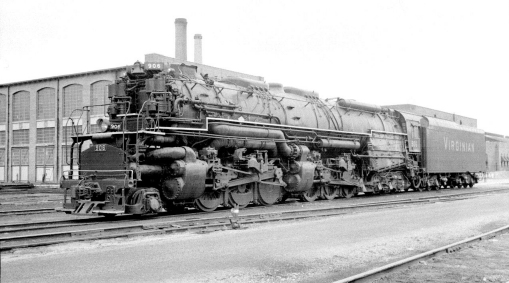 #906 |
|
Wheel Arrangement
Builder Original Year of Construction Cylinders(4) Boiler Pressure Driver Diameter Tractive Effort Weight on Drivers Locomotive Weight |
2-6-6-6
Lima Locomotive Works 1941 22.5" x 33" 260 PSI 67 Inches 110,200 Pounds 504,010 Pounds 775,330 Pounds |
Back to Fairchild Junction